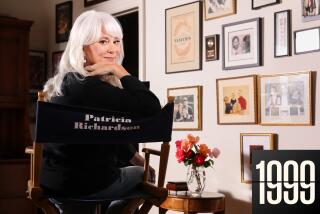Rogers’ ‘In C’: More pulse than heartbeat
For a choreographer, Terry Riley’s seminal 1964 minimalist score, “In C,” is a gift. Its nonstop background pulse establishes a steady rhythmic floor for dancing. The ebb and flow of the 53 short figures in the score -- which must be played consecutively but with options left to the musicians -- lets the choreographer assemble any number of movement motifs against constantly shifting textures.
Raiford Rogers may not use 53 choreographic units in his 2002 work “In C,” danced on the second half of a two-part program Saturday at the Luckman Theatre at Cal State L.A. Someone else will have to count. But the score did give the Raiford Rogers Modern Dance Ballet a unity and an energy it lacked earlier.
The steady pulse made the nine dancers seem invigorated even when they just stood there, and it gave coherence to the piece when they moved at different tempos. Whether in slow walks, difficult tilted balances or springy jumps and turns, they blended whatever you saw with what you heard, even if the sequencing looked arbitrary. It could not have been easy to keep count.
Lisa Gillespie and Veronica Caudillo were arresting in their balances and clarity of shape. Rogers showed an unfailing eye for how to make good stage pictures. Even so, it looked as though the score accommodated the choreography more than the choreography illuminated the score.
Bohuslav Martinu’s Piano Quartet No. 1, the basis for Rogers’ “Wishes and Turns,” is a different kind of music. (Both works were on tape.) Composed in 1942, it is essentially a traditional hotblooded romantic piece that reflects the composer’s Czech origins.
Rogers’ response is impassioned but often oblique. He reflected the modernist touches in the music with odd distortions of classical vocabulary, such as incrossed-leg dips and turns. He listened to rhythms deeper than the surface melodies to impel the movements, but it was hard to follow them. Although he suggested narrative elements -- Gillespie’s escape efforts in her opening duet with Jack Hansen or Caudillo’s lonely solo walks -- he left them undeveloped.
He’s just revised the work, created in 1985 for five women and two men, to accommodate his two additional men. Apart from brief moments, however, the dancing looked uncharacteristically labored and strangely empty.
Maybe the troupe hasn’t had enough time to jell.
More to Read
The biggest entertainment stories
Get our big stories about Hollywood, film, television, music, arts, culture and more right in your inbox as soon as they publish.
You may occasionally receive promotional content from the Los Angeles Times.






